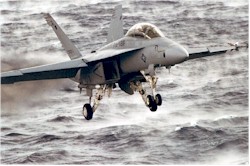Aircraft mishap investigation can be extremely
difficult, time consuming, stressful, but also rewarding when we
recognize that the contributions we make will improve aviation safety.
A thorough mishap investigation is absolutely necessary to determine
the cascading events causal to a mishap and recommending corrective
actions to prevent recurrence.
This edition of the Pocket Reference introduces a new
tool in accident investigation, the Human Factors Analysis and
Classification System (HFACS).
HFACS provides the accident investigator with a proven template that
aids in organizing the investigation while providing a detailed
analysis of human error for post-hoc mishap data analysis, revealing
previously unidentified trends and hazards.
Historical data has shown that human error, by itself
or in combination with other factors, is present in about 80% of
aircraft mishaps, and is therefore the single greatest aviation
hazard. As a member of an Aircraft Mishap Board (AMB), the Flight
Surgeon is responsible for doing an exhaustive investigation in an
area most likely to yield results: the medical and human-factors
portion. Past investigations have shown that human factors are not
limited to just pilot error. Human factors extend to aircraft
maintainers, air-traffic controllers, the Squadron chain of command,
Airwing, TYCOM, and can continue to CNO. The role of an investigating
Flight Surgeon is not limited solely to an in-depth analysis of the
individuals directly involved in the mishap, it must include all of
the individuals and events that, through careful analysis, reveal the
entire mishap chain.
How the Flight Surgeon meets the duties and
responsibilities of a mishap investigation will affect his appraisal
by his peers and seniors in the Navy as an officer, a Flight Surgeon,
and a physician, perhaps to a larger extent than anything else he may
do while on active duty.
During an investigation, he should demonstrate the
same respect for objectivity and confidentiality that is expected of
the Flight Surgeon in his role as a personal physician. If, by his
efforts as a physician and mishap investigator, a Flight Surgeon
prevents one aviation mishap in a 20-year Naval career, he will have
saved the Navy more than his entire career pay. While a Flight Surgeon
may never have absolute proof that he prevented a mishap, he must
always do his best to prevent damage, injury, or death.
